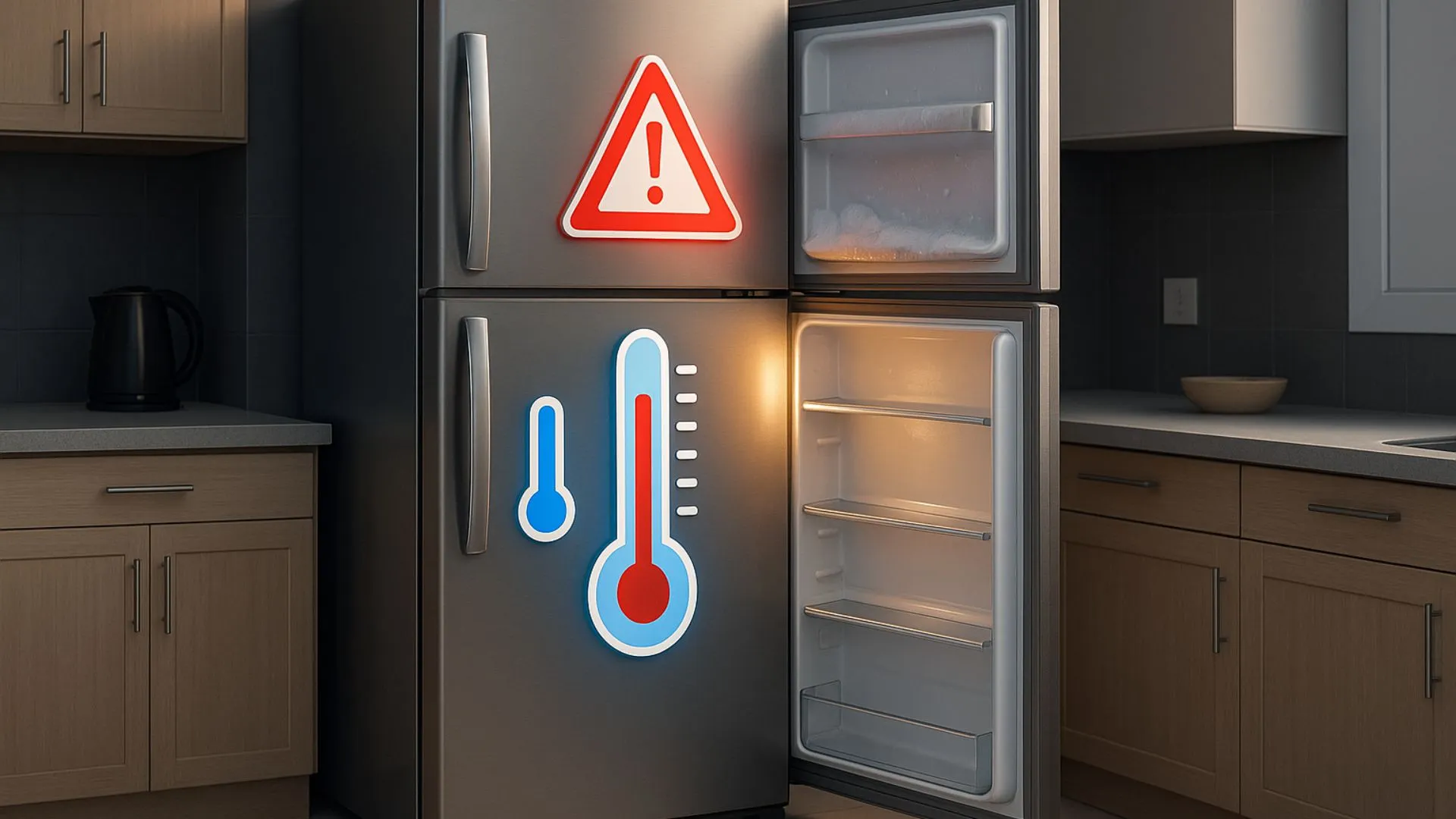Why isn't my refrigerator cooling?
Discover the common reasons why your refrigerator isn't cooling, from a lack of refrigerant to compressor failures or a frozen evaporator, and learn which co…

When your refrigerator isn't cooling properly, it can directly impact food preservation and lead to waste. This problem can stem from various causes, such as a lack of refrigerant, which affects cooling capacity; a compressor that won't start, preventing the refrigeration cycle; or a frozen evaporator that blocks the flow of cold air. Understanding why your refrigerator isn't cooling is key to identifying the cause and applying an appropriate solution that will extend the appliance's lifespan and keep your food fresh.
Definition and function of a refrigerator
A refrigerator is an appliance designed to keep food and drinks at low temperatures, slowing bacterial growth and prolonging freshness. Its operation is based on a closed refrigeration system that includes components such as the compressor, evaporator, condenser, and refrigerant lines. As a technician with years of experience repairing appliances, I know that diagnosing a refrigerator that isn't cooling requires checking each of these components to detect any faults or malfunctions.
Common signs or symptoms
- Not cooling: The refrigerator is not lowering the internal temperature, which may indicate a lack of refrigerant or problems with the compressor. This puts food at risk.
- Unusual noise or compressor not starting: The compressor could be damaged or blocked, affecting the cooling cycle.
- Ice formation on the evaporator: A frozen evaporator blocks the passage of cold air and reduces the efficiency of the refrigerator, in addition to causing frost buildup.
Common causes
Cause 1: Lack of coolant
A loss or deficiency of coolant reduces the system's ability to absorb heat from the interior. It is detected by checking the system's pressure level and can be noticed because the engine works harder but doesn't cool properly.
Cause 2: Compressor not starting
The compressor is the heart of the refrigerator; if it doesn't start, the refrigeration cycle won't begin. This can be due to electrical faults, a defective relay, or internal damage. It's identifiable because the motor makes no noise or clicks without running.
Cause 3: Frozen evaporator

When the evaporator freezes , it blocks the flow of cold air into the refrigerator. This usually happens due to a faulty thermostat or fan, or a malfunctioning defrost system. It can be detected visually or by the accumulation of frost.
Cause 4: Dirty filter or coil
Dust and dirt in the filter or coil can impede the heat exchange necessary for proper cooling. This is identified by a visible buildup of dust and poor refrigerator performance.
Cause 5: Thermostat problems
If the thermostat is damaged or incorrectly calibrated, it won't send the correct signal for the compressor to operate. This can be detected by measuring the internal temperature and checking the control unit.
Step-by-step (safe) solutions
Before performing any inspection or repair, unplug the refrigerator from the power supply to avoid electrical hazards.
- Step 1: Visually inspect the evaporator and coil for frost or dirt. Use a screwdriver to remove panels if necessary. Estimated time: 15 minutes.
- Step 2: Verify that the compressor starts when you reconnect the unit. Listen for a clicking or steady noise from the motor. If it doesn't start, check the relay and capacitor.
- Step 3: If you suspect refrigerant loss or complex electrical problems, stop the inspection and contact a certified technician for recharging or specialized repairs.
Quick alternatives
- Option A: Manually defrost the evaporator to remove ice. Pros: Immediate and simple solution. Cons: Temporary and does not address the root cause.
- Option B: Deep cleaning of the coil and filter. Pros: Improves efficiency. Cons: Requires frequent maintenance and does not fix electrical problems.
Costs and when to call a technician
Repair costs range from 500 to 3,000 pesos or more, depending on the part and labor time. Factors affecting the price include the refrigerator model, parts availability, the severity of the problem, and the technician's rates. You should call a professional if the compressor won't start, if there's a refrigerant leak, or if the electrical system is malfunctioning, as these issues require specialized tools and technical expertise.
Common mistakes to avoid
- Do not unplug the refrigerator before working on it, as this may cause electrocution.
- Attempting to recharge refrigerant without proper equipment can damage the system and is dangerous.
- Ignoring signs of electrical faults and continuing to use the appliance increases the risk of irreparable damage.
Preventive maintenance (checklist)
- Clean rear or lower coil - every 6 months.
- Check and clean the air filter - every 3 months.
- Check that the evaporator is free of frost - every month.
Frequently Asked Questions
Why is my refrigerator making noise but not cooling? It could be that the compressor is running but there's a lack of refrigerant or the evaporator is frozen.
Can I recharge the refrigerant myself? It is not recommended, as it requires specialized equipment and technical knowledge.
Does the thermostat affect cooling capacity? Yes, a faulty thermostat can prevent the compressor from working properly.
Resources and references
- Official Whirlpool Refrigerator Maintenance Manual.
- Technical guide of the National Association of Refrigeration Technicians.
Summary
Identifying why your refrigerator isn't cooling is crucial to preventing food spoilage and higher costs. Checking key components like the compressor, refrigerant, and evaporator will help you diagnose the problem. If you're unsure or the issue is complex, don't hesitate to call a qualified technician for a safe and effective repair. Keeping your refrigerator in good working order extends its lifespan and ensures your food is stored properly. Act promptly and protect your investment!